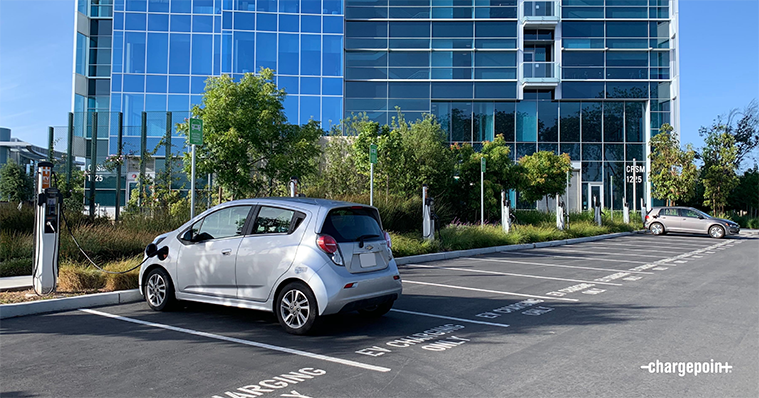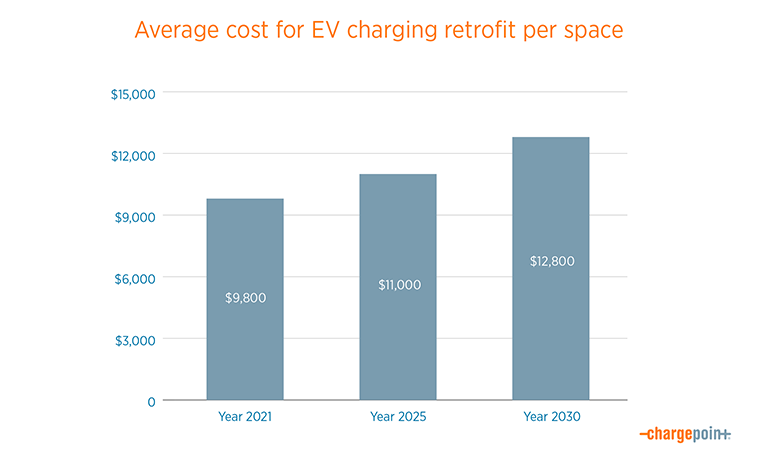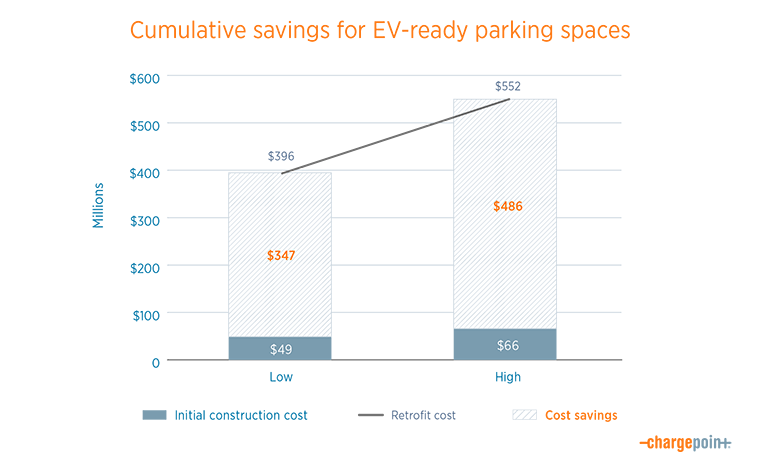
As a contractor, you may already know that many cities and states have building codes that relate to electric vehicles (EVs). But do you know how much money EV-ready construction can save you over time and how it can increase demand for your services? In this post, we explain how EV-ready building codes support the shift to electric mobility, save money and can reel in new business, all at the same time.
EVs are accelerating
Today more than 5.6 million EVs are on the roads worldwide, with more than 500 zero-emission vehicle (ZEV) models available. And it’s expected that by 2025 20% to 30% of all vehicles sold in the United States, Europe and China will have electric motors. Electrical engineers and contractors like you must get ready now to accommodate these vehicles in parking lots and garages across all types of properties. Failing to prepare now will cost millions later on and could compromise your customer relationships by incurring unexpected costs.
Building codes, as you know, are sets of rules and regulations that govern standards for how residential and commercial buildings are constructed. EV-ready building codes can vary by region, but they typically require new building construction to prepare a certain proportion of parking spots where EV charging can be installed at a later date, supporting EV drivers as well as business and regional sustainability goals.
EV-ready requirements vary
While EV-ready building codes can help encourage EV adoption, they don’t always require EV charging stations to be installed at all of the parking spots involved in a project. Instead, EV-ready codes may simply require that a building’s electrical capacity and other infrastructure be ready to install charging when demand increases. EV-ready requirements might include:
- EV charging stations installed at a certain percentage of parking spots
- A percentage of parking spots at commercial buildings and multifamily housing developments prepared for charging stations, meaning:
- A dedicated electrical circuit with sufficient capacity for each charging spot
- Installation of the conduit and wire required to run electricity to EV charging spots
- Electrical panels labeled “EV-ready” and positioned near where people will park
In 2021, the International Code Council issued a new framework to support communities with building code guidelines to help them reach their carbon emissions goals. The U.S. Department of Energy, for example, is using this framework to outline more specific guidance and help roll out more consistent EV-ready building codes across more regions. Typically, for multifamily and commercial properties, EV charging infrastructure requirements are applied as a percentage of total parking spaces — for example, 5% of parking spaces must be EV-capable for parking lots with more than 10 spaces. Of course, because most drivers want to charge where they live, residential buildings need the greatest capacity for charging. These codes are evolving as the demand for EVs increases.
EV-readiness can save millions
If a building wasn’t built with EV charging in mind, owners will need to retrofit the site, adding electric capacity and running conduit to accommodate the necessary EV charging infrastructure. This process can take several weeks and cost tens of thousands of dollars, delaying charging availability, taking time away from other projects and in some cases compromising people’s ability to drive electric. Of course, before a certain date, the idea to plan for electric vehicle charging when constructing a new building would not have entered anyone’s mind.

But today, preparing a building for EV charging is an imperative — and it’s much more cost-effective to do so from the start rather than down the road, even if you don’t plan to install charging stations right away. According to CalMatters, “installing EV infrastructure at the time of new construction is by far the least expensive way to build EV charging access: Retrofitting can be four to 10 times more expensive. California will save up to $1.4 billion by installing charging upfront, rather than retrofitting later.”

The graph above plots the cost of retrofitting alongside the corresponding growth in parking requirements and EV-ready savings over time for new construction of office and retail properties. As the number of spots and demand for charging grow, the cost of retrofitting grows too.
EV-ready construction earns LEED points
LEED certification is an important goal for many buildings. Networked EV charging stations and EV-ready construction can help earn points toward LEED certification, setting your buildings apart from the competition. To earn LEED points, EV charging spots must accommodate Level 2 or faster stations, connect to a network, be capable of supporting demand response or time of use charging, and be compatible with universal EV charging connectors.
In addition to earning LEED points from EV charging spots themselves, buildings can earn points when 10% or more of occupants use alternative transportation such as EVs. Having more charging stations available encourages more people to drive electric, generating more LEED points. LEED certification may also provide attractive building incentives such as expedited review, density and height bonuses, tax credits, grants and more.
If you’re a contractor who does business in a state with EV-ready building codes at play, you already need to meet these requirements. If you’re located in another state, the codes are likely just around the corner, so you should educate yourself now on EV charging infrastructure and installation.
ChargePoint has a number of design tools to help future-proof your projects with smart EV charging.
